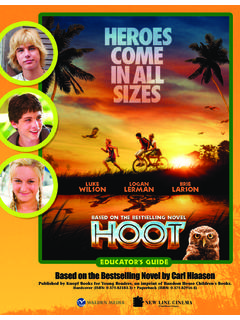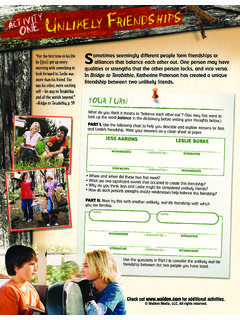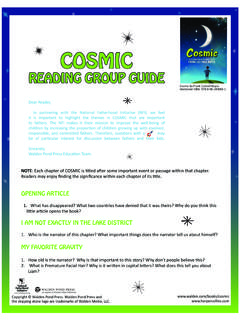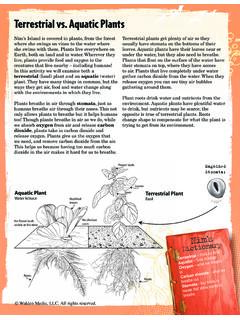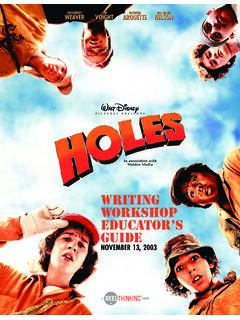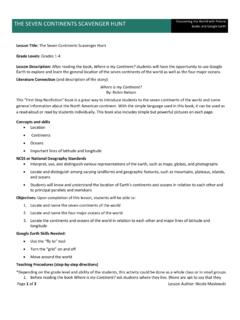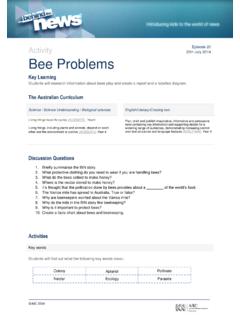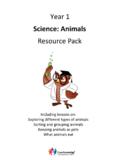Transcription of TEACHER PAGE LEAPIN’ LIZARDS - Walden Media
1 TEACHER PAGELEAPIN LIZARDSAND OTHER FACTS ABOUT REPTILES AND AMPHIBIANSDESCRIPTION In Holes, the fictitious yellow-spotted lizard is feared for its deadly bite. Herpetologists (scientists who study reptilesand amphibians) assure us that the yellow-spotted lizard does not exist. There are, however, more than 6,000 knownreptile species to learn about, and some 2,400 different amphibian species, some of which are LEVEL:5 8 SUBJECTS:Technology, Science, Language ArtsDURATION:One 40-minute class period,one homework assignment NATIONAL STANDARDS: Technology, Standard 5: Technology research tools; Science, Standard 3: Life science; Language Arts, Standard 7: Evaluating data, Standard 8: Developing research skillsMATERIALS: Computer with Internet connection and student worksheetUse this lesson to help students develop Internet research skills by seeking facts about reptiles and amphibians on assigned web sites.
2 OBJECTIVES To utilize the web for primary source information on animals To identify various reptiles and amphibians To communicate found research in a creative mannerthat suits the intended audienceADAPTATIONSY ounger students should work in groups, allowing theteacher more time to spend with each group, and to helpencourage research. Have students draw a picture thatrelates to the research that they ve found, and write oneto three sentences about their picture and a five-point rubric to assess students on demonstrated competence in using the Internet to locatespecific pieces of information, and how the informationis incorporated into a creative and succinct idea for animaginary television documentary. EXTENSIONSU sing the information found in the research, have students create posters around the findings.
3 Present the posters to the rest of the Prepare for the class by familiarizing yourself withthe web sites that students will be utilizing: The Columbus Zoo( ) The Smithsonian National Zoo ( ) The United States Geological Survey s Field Guidefor Reptiles and Amphibians of Coastal SouthernCalifornia ( )2. Pose the following questions to students: How arelizards and reptiles different from other types of animals? What s the difference between a reptile and an amphibian? Pass out copies of the worksheet to students. 4. If computer accessibility is limited, consider havingstudents pair up or work together in small groups. 5. Each individual or group should submit one RESOURCESO fficial Holesweb site: web site for the Animal Planet channel: web site for National s Naturevideos from the series, The Encyclopedia of Reptiles and Amphibians, by Tim Halliday (Editor), Kraig Adler (Editor), Firefly Books, (2nd Edition), by F.
4 Harvey Pough (Editor), Robin M. Andrews, John E. Cadle, Martha L. Crump, Alan H. Savitzky,Kentwood D. Wells, Prentice Hall, 2000. 2003 Walden Media , PAGE LEAPIN LIZARDSAND OTHER FACTS ABOUT REPTILES AND AMPHIBIANSIn Holes, the fictitious yellow-spotted lizard is feared for its deadly bite. Herpetologists (scientistswho study reptiles and amphibians) assure us that the yellow-spotted lizard does not exist. Thereare, however, more than 6,000 known reptile species to learn about, as well as 2,400 different amphibian species, some of which are 1: Visit the web sites below, then jot down five interesting facts about reptiles and amphibiansthat you find. Look for traits that are different from other animals such as mammals, fish, or do they adapt to desert life?
5 Web site resources The Columbus Zoo ( ) The Smithsonian National Zoo ( ) The United States Geological Survey s Field Guide for Reptiles and Amphibiansof Coastal Southern California ( )1. 2. 3. 4. 2:Choose one fact that you just discovered about a reptile or amphibian. Imagine that you nowhave the power to create a television documentary about that animal. Who is the television show for?Will your audience be students? Adults? Scientists? What is the title of your show? Create a briefdescription of the show that could be published in your cable television guide. Use back of worksheetif :Audience:Description: 2003 Walden Media .
